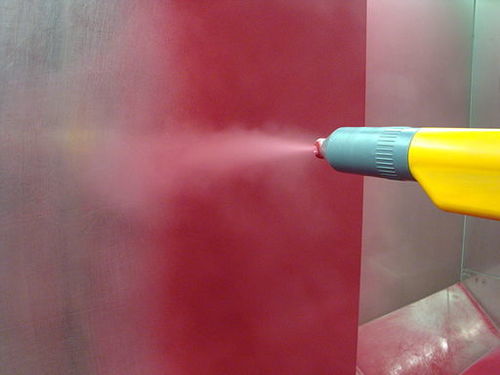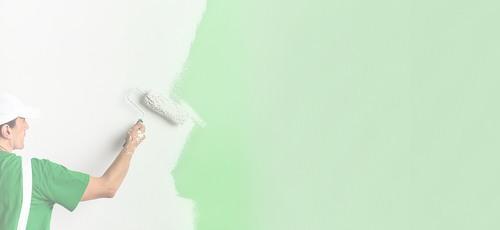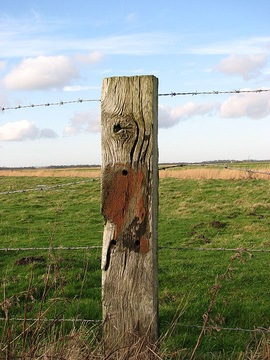Powder Coat vs Paint
Powder Coating
$250 - $300
(powder coating a bed frame)
VS
Painting
$50 - $150
(painting a bed frame)
Cost to apply powder coat or paint varies greatly by region (and even by zip code).
To get free estimates from local contractors, please indicate yours.
Powder Coating

- Smoother texture
- Only one application needed
- More durable
- Longer-lasting
- Safer and easier to store
- Eco-friendly
- Excess powder can be reused
- Smaller range of colors
- Best left to the pros
- More expensive
(powder coating a bed frame)
Get free advice and estimates from painters in your city.
Painting

- More color options
- Easy for DIY
- Cheaper
- More accessible
- Uneven texture
- Less resistant
- Contains VOCs
- More wasteful
- Harder to store
(painting a bed frame)
Get free advice and estimates from painters in your city.
When you want to change the color or refresh the look of various everyday items like bed frames, fence posts 1, and garden furniture, you have a choice between powder coating and painting. This guide presents the pros and cons of both options, helping you make the right choice for your next project.
Texture
When comparing powder coating and painting, you will notice a difference in texture. Powder coating uses a fine powder that almost looks like baking flour in its raw state. The technical way this powder is applied results in a very smooth and consistent surface, without any brush marks, drips, or uneven areas.
Liquid paint, whether applied by brush or from a spray can, presents more of a challenge when trying to apply a smooth and even coat. It often drips and spreads unevenly, leading 2 to a final texture that may have a little roughness. If you want to avoid any application marks and have the smoothest possible finish, powder is the way to go.
Color
One area in which paint has the advantage is in color variety. There are many more color options to choose from when you select paint over powder, giving you more flexibility for how things look and making it easier to match different objects.
Application Process
Powder coating makes use of a powder of resins and pigments that is carefully applied to a surface using a special electrostatic spray deposition system. This system makes the powder particles attracted to the surface, and then heat is applied to seal the powder in place. Any excess powder can be gathered up and reused later. Due to the complexity of powder coating, it is usually best left to professionals to apply.
Painting, on the other hand, is a much less technical process that can be done by almost anyone. It is not necessary to hire a professional or use any special equipment apart from a brush, roller, spray can, and some basic protection. Wet paint is applied to a surface and then left to dry without the need for heat-curing.
Multiple layers or coats of paint are often needed to reach the desired effect, and you must wait after each coat for it to dry. With powder coating, a single application is all you need. This makes the process more efficient, but the curing process takes quite a while for very large objects.
Costs
Powder coating is generally more expensive than painting because professional tools and labor are often needed. You can buy DIY powder kits for $100 to $200 for use on smaller objects, but if you want to powder coat something professionally, you will pay anywhere from $100 to $500 or a fee of $55 to $75 per hour of labor.
Painting can be inexpensive, whether you do it yourself or hire a professional. You can buy paint in hardware stores for as low as $15 to $20 per gallon and apply it at home. If you hire a professional to help, you will usually pay around $30 to $100 per hour, depending on the size of the project.
For example, having a metal double bed frame professionally powder coated costs around $250 to $300, which includes material and labor costs. It also includes the cost of sandblasting, which is sometimes necessary to remove the previous finish before applying the powder. Painting it yourself costs about $50 or less in materials. Having a professional do it will cost around $100 to $150, including paint and labor.
Durability
When applying any kind of paint or coating to a surface, you want it to last as long as possible without needing to touch it up or reapply it. In terms of durability, powder coating is unmatched. It creates a very thick, adhesive finish that lasts much longer than the average coat of paint. It is also highly resistant to things like UV light from the sun or moisture in the air, keeping its strength and color more efficiently than paint.
Whether you apply it to a piece of indoor furniture or something that is kept outdoors like fence posts 1 or handrails 3, a powder coat can last up to 15 years. In contrast, paint lasts for about 5 to 10 years on average. However, one advantage of paint is that it is easier to apply new coats, whereas powder cannot be used for touch-ups in the same way.
Safety
In terms of safety and health risks, powder coating is considered the safer option for several reasons. First, powder coats do not contain any volatile organic compounds (VOCs), but wet paints do. According to the Environmental Protection Agency, VOCs may cause “eye, nose and throat irritation; Headaches, loss of coordination and nausea; Damage to liver, kidney and central nervous system; and some organics can cause cancer in animals, some are suspected or known to cause cancer in humans.”
There is also the matter of storage. Wet paint can be more difficult to store because it is flammable. Powder coating is not flammable, so it does not pose a risk of a chemical fire.
Environmental Concerns
If you want to help the environment, powder coating is probably the more eco-friendly option. This is because there is almost no waste with powder coating. Collect any of the excess powder and reuse it, which cannot be done with paint.
Also, powder coats contain almost no VOCs, which can be harmful to the environment. Paints often contain VOCs, but some are more eco-friendly, and low VOC paints are now available in stores.
DIY
If you prefer to do it yourself, painting is the recommended option. The complexity of the powder coating process makes it very challenging for anyone who is not a professional.
You can buy DIY powder-coating kits, but they are only useful for small objects. You also typically need special equipment to powder coat anything large or medium-sized, whereas painting can be done in your own home or backyard very easily.
Remodeling Terms Cheat Sheet
Definitions in laymen's terms, cost considerations, pictures and things you need to know.See full cheat sheet.
 1 Fence posts: A sturdy pole set securely in the ground, that is used to support a fence. Fence posts are placed at regular intervals, and the other parts of the fence are attached to them
1 Fence posts: A sturdy pole set securely in the ground, that is used to support a fence. Fence posts are placed at regular intervals, and the other parts of the fence are attached to them
 2 Leading: A naturally occurring heavy metal that is highly toxic to humans, and has been used in paint, gasoline, piping, and other applications
2 Leading: A naturally occurring heavy metal that is highly toxic to humans, and has been used in paint, gasoline, piping, and other applications
How much does it cost to apply powder coat or paint in my city?
Cost to apply powder coat or paint varies greatly by region (and even by zip code).
To get free estimates from local contractors, please indicate yours.